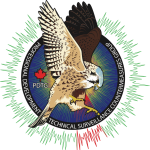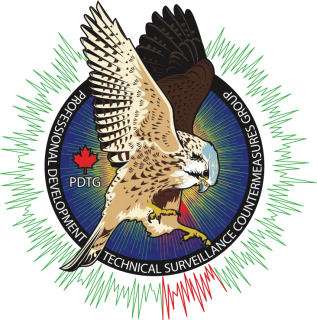Scope of Work
A unique scope of work is developed for each assignment based on all the factors and type of facility.
The Technical Security Branch (TSB) TM of Professional Development TSCM Group Inc., has developed the most extensive Operational Standard | Policy and Procedure Guideline (OS-PPG) TM and companion TSB 2000 (Technical) Standard TM available.
The OS-PPG TM is based on our (40+) years of hands-on TSCM and Counter-Intelligence related assignments, and the conducting of extensive high-threat level TSCM related work assignments around the globe.
Our Technical Security Branch (TSB) TM provides full technical sweep documentation to the client in the form of a formal Final Inspection Report (FIR) that addressed more than thirty (30) scope of work reporting elements.
Our certified Technical Security Specialists (TSS) TM, utilize current state of the art electronic detection and analysis equipment resources.
Our Technical Security Specialist’s (TSS) TM also utilize a wide variety of RF Spectrum Analyzers capable of detecting and analyzing hostile signals up to 54 GHz and beyond.
PDTG Inc., utilizes the Kestrel TSCM TM Professional Software | Signals Intelligence Support System TM , a highly advanced detection application utilized by commercial, government, military, law-enforcement and the national security apparatus in 49 countries worldwide.
Our highly qualified Technical Security Specialist’s (TSS) TM complete a methodical physical inspection of the target area or facility to identify unauthorized monitoring devices and other sophisticated methods of compromise, many of which are not electronic in nature.
A customized TSCM approach is developed for each of our clients specific technical security situation and circumstances.
There are many individuals and Private Investigation agency’s claiming to offer this service, most credible PI agencies, sub-contract their client’s needs to the the Technical Security Branch (TSM TM of Professional Development TSCM Group Inc.
The less reputable companies have limited or no experience, cheap ineffective equipment, and charge hundreds or thousands of dollars for little than an ineffective rain-dance. In essence this erodes the client’s overall technical security posture and provides a false sense of security and a false peace of mind.
TSB TM personnel are required to undergo mandatory annual technical skills development.
When the TSCM function is combined with modern professional methods and techniques, the result is reduced risk of technical compromise, peace of mind, and helpful recommendations, leading to an improved overall technical security posture of our client’s sensitive and confidential information.
It is this fact, that has convinced many private investigation and security agency’s to sub-contract their services to the PDTG Inc., Technical Security Branch (TSB) TM, and the vast experience and equipment resources available to provide the best outcome for their clients.
The TSB TM will answer all of the client’s questions and provide a firm quotation of our services up-front to the sub-contractor, so that their will be no uncertainty or surprises for the sub-contract agency or the client.
The TSB TM as developed a powerful Electronic Report System (ERS) TM method of providing the client the sophisticated TSCM reports available.
Typical TSCM Requirements
There are many requirements involved in a typical TSCM assignment, not all are equally important or essential. Each assignment is unique and our Technical Security Specialists (TSS) TM determine the best approach and resources for each assignment. The following are some of the key scope of work elements for consideration.
- Telecommunication Network Review | Analysis
- Detailed Physical Inspection
- RF Panoramic Spectrum Analysis
- Non-Linear Junction Detection (NLJD)
- Thermal Imaging Inspection
- Counter Intelligence (CI) Review
- Threat Risk Assessment
- Computer | Local Area Network Inspection (non-forensic)
- Wire Mapping | Cable Source Tracing and Identification
- Power Line (PL) Analytics
- RF Video Camera Detection
- Optical Threats | Laser | Infrared | Visible Light Modulation
- Microphone | Video Camera | Digital Recorder Identification
- Audio Acoustical Leakage (AAL)
- Additional Proprietary Methods / Techniques
Some or all of the above methods and techniques are utilized by the TSB to ensure that the client’s confidential information remains confidential.
The complexity of modern telecommunication networks require sophisticated equipment resources and literally a quarter century of knowledge to properly inspect the new technology which in most cases involves a mix of old and new.
These so-called hybrid installations often are vulnerable to attack in a number of ways and variety of locations.
For example, modern digital telephone systems or fiber-optic network is likely vulnerable at various appearance points both internally and external to the target area or facility.
What might appear as a straight forward inspection by the untrained eye, might well yield many vulnerabilities to an experienced and skillful certified Technical Security Specialist (TSS).
Typical TSCM Inspection Overview (Guideline Only)
During a typical Technical Surveillance Countermeasures (TSCM) inspection, a comprehensive threat assessment will be made of all designated target areas, and a plan developed to best implement the TSCM inspection.
A preliminary silent sweep will be conducted to attempt to locate eavesdropping devices while they are in operation without alerting any potential eavesdropper.
Often times this phase of the inspection will be completed prior to entering the target area to determine if video or audio surveillance transmitters are present.
A full active (alerting) sweep will then be conducted within the identified target area and other areas identified by the TSB personnel conducting the sweep inspection.
 A full panoramic RF spectrum analysis will be performed to check for hidden radio transmitters and parasitic RF telephone transmitters.
A full panoramic RF spectrum analysis will be performed to check for hidden radio transmitters and parasitic RF telephone transmitters.
This phase of the inspection will be completed utilizing some of the most advanced technology available, including the ITAR restricted OSCOR Blue (24 GHz) and the Kestrel TSCM TM – Signal Intelligence Support System (SISS).
Electrical power outlets and other wiring paths will be inspected with specialized equipment in order to locate power line carrier current based Technical Surveillance Devices (TSD).
A thorough physical inspection will be conducted in all designated target areas identified during the inspection, often utilizing advanced optical inspection tools.
A Geographical Area Review (GAR) TM will be conducted adjacent to and surrounding the target premises based on the TSB 2000 TM (Technical) Standard.
Our TSB certified Technical Security Specialist’s (TSS) TM will conduct a target area review utilizing a FLIR Infrared (IR) Thermal Imager to identify potential infrared thermal energy signatures associated with electronic surveillance devices.
A complete electronic analysis and physical inspection will be accomplished on all target area telephones, telephone lines, and related telecommunication equipment.
A full verbal report will be provided to the client or his / her representative immediately upon completion of the sweep, and a detailed written report will be submitted within 72 hours.
Recommendations based on our findings will always be provided to enhance our client’s protection of confidential information and communications after the inspection is complete.


